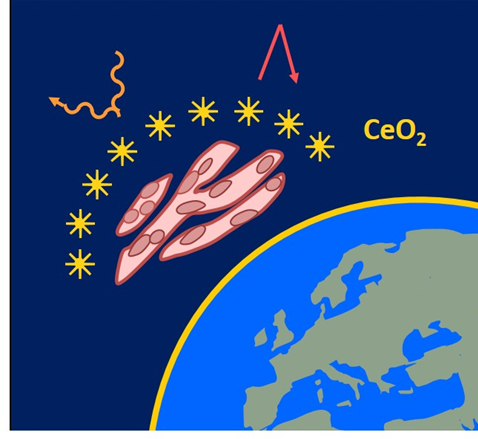Nanotechnology solutions against oxidative stress in muscle tissue during long-term microgravity exposure (NANOROS)
Research domain: LifeTech - Subtopic: Bio-MaterialsAs noticed on astronauts upon return to Earth, long term exposures to microgravity conditions induce severe alterations in skeletal muscle both at an anatomical and at a functional/postural level. Several studies on ground have recently evidenced how oxidative stress, due to the imbalance between production and elimination of oxygen reactive species (ROS), represents an important factor working to the detriment of cell activities. Oxidative stress induced by microgravity may be one of the main reasons for the deleterious effects of space environment on skeletal muscle. The aim of this project therefore consists in the elaboration of countermeasures to microgravity-induced oxidative stress, relying on the use of nanotechnological antioxidants such as cerium oxide nanoparticles (nanoceria). Currently studied as therapeutic solutions in biological systems, ceria nanoparticles in fact show electron defects in correspondence of oxygen atoms, that represent reactive sites for ROS scavenging. The extreme versatility of nanoceria enables the exploitation of its antioxidant properties without the need for repetitive administrations. The results achieved in this investigation will hopefully bring tremendous improvements not only in the quality of life during space missions, but even in the case of several pathologies due to oxidative stress on Earth.
Project funding: Italian Space Agency (ASI)

Rat muscle cells are sent in orbit aboard the International Space Station, and cerium oxide nanoparticles (nanoceria) are administered to them. The effects of space in the presence or absence of nanoceria are evaluated through transcriptomics, with the goal of elucidating space-elicited cell damage as well as nanoceria as pharmacological remedy against the detrimental effects of space.
